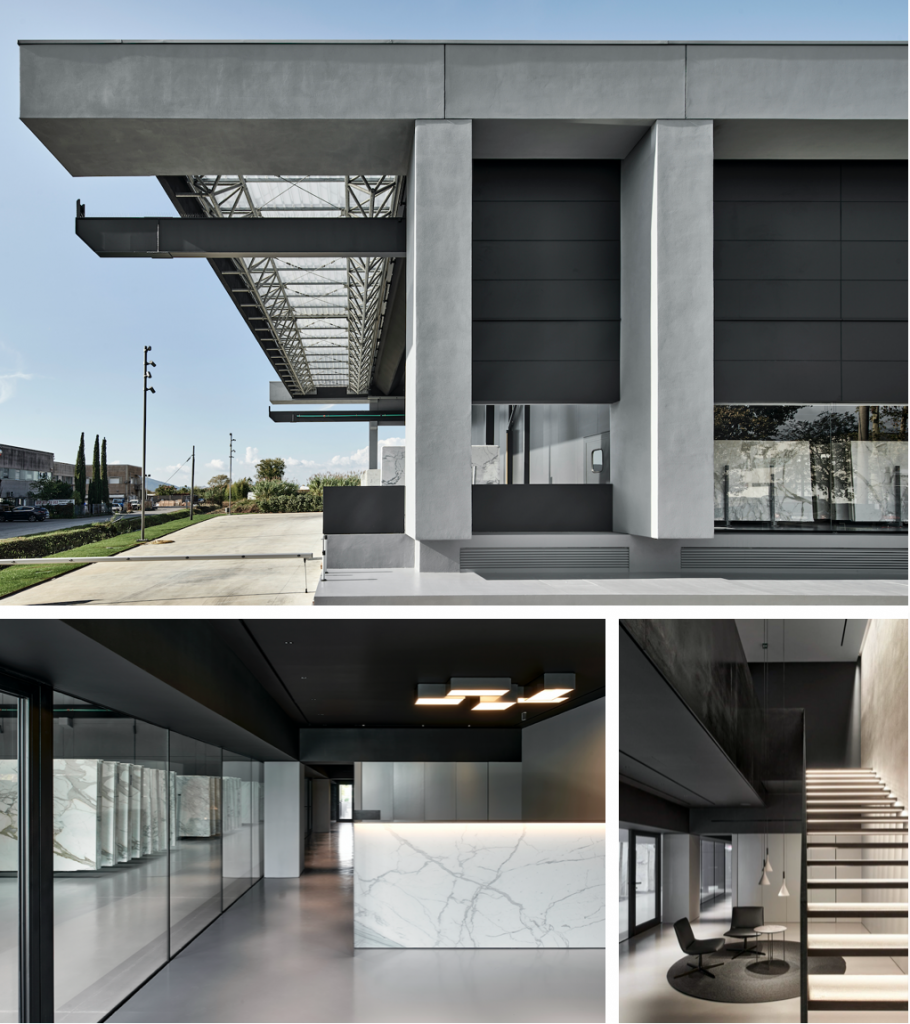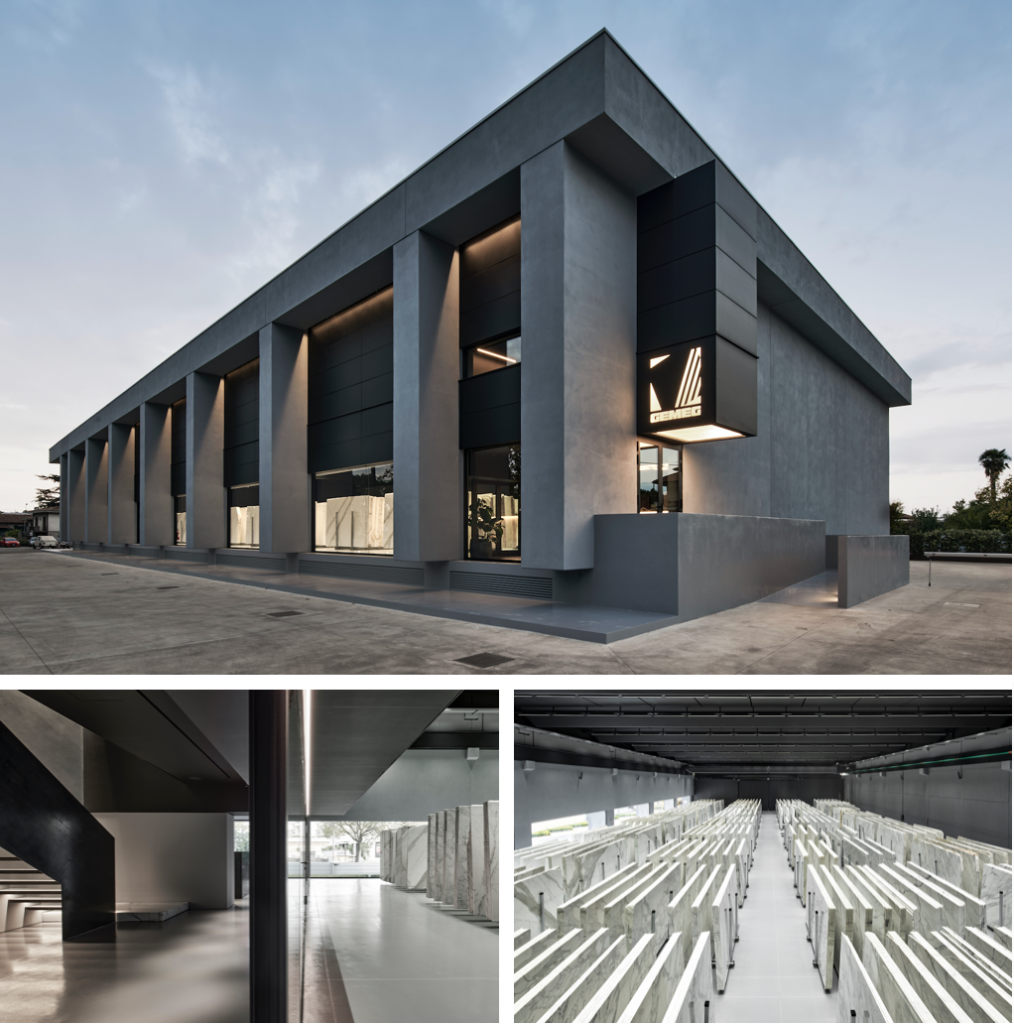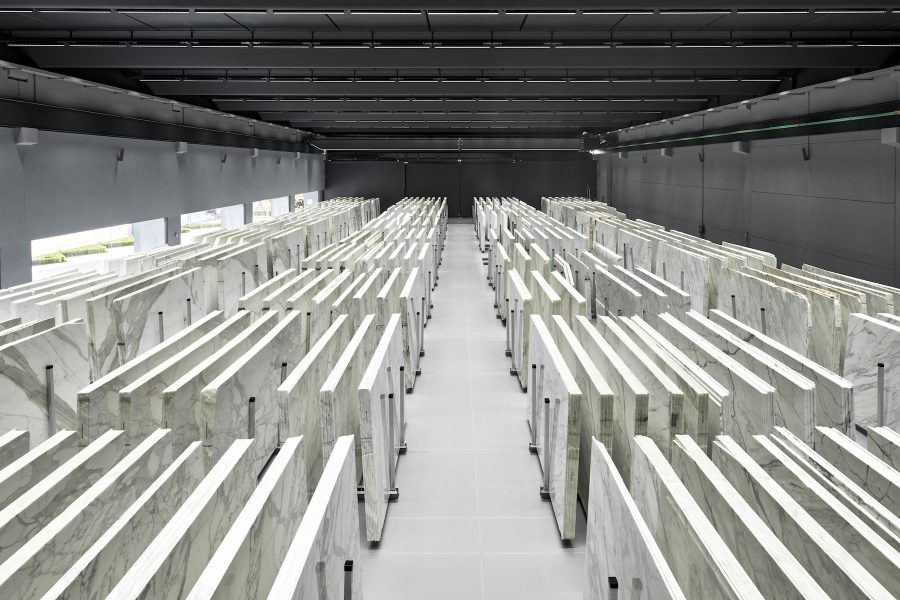2017 – 2022
Viale Galileo Galilei 38, Carrara (MS)
The access point to the municipality of Carrara is called GEMEG, and it is a precise, technical volume composed of highly pronounced horizontal and vertical lines. Through the projection of their shadows, they overlay a subtle visual layer onto the facade design, which varies throughout the day. It recalls the architecture of the Modernist movement, with its rationalist matrix, mathematical proportions rhythmically defining spaces, and its theories aiming to consider buildings of this size – approximately 1,400 square meters of covered area – as contemporary monuments for the city and as primary elements within the urban and social fabric.
This marks the starting point of the design process that Victor Vasilev began to trace in 2017, commissioned by Luca Soldati – president of GEMEG – for the redevelopment of the industrial building owned by the Tuscan company, a leader in the extraction and commercialization not only of Carrara White but also of Statuario and Calacatta marbles, which the company has transformed into true product trends in the world of interior design.
The project involved both the exterior and interior of the building, elevated to become a material narrative of the entrepreneurial history of the Soldati family and their cultured and international vision. This vision was showcased on the big screen in the film “Il Capo” directed by Yuri Ancarani and presented at the 67th Venice International Film Festival in 2010. The film, which won numerous awards worldwide, transitioned from the world of cinema to the direction of architecture, as imagined by the clients, resembling an art gallery in which to display marble slabs, unique in color and vein patterns, to be unveiled along an exhibition path.
“The material extracted from GEMEG was not meant to be an overt manifesto, and in this sense, it was not intended to become a facade covering, outdoor areas, or floors. The company extracts it in blocks and transforms it into slabs, but it is not processed as a finished product. History has also taught us that marble is entrusted with the highest expression – artistic and constructive – of a civilization and should be used sparingly, also because it does not regenerate in nature. In this sense, it should not be employed as an architectural solution, but rather as an object of contemplation,” says Victor Vasilev, who has successfully captured the instructions and interpreted them in a rigorous and attentive language, with nuances that enhance the purity of the stone.
The envelope is consistent both inside and outside, with a prevalence of grays that shape a pure and essential container. The main facade is punctuated by a monumental colonnade that spans its length and is highlighted by night lighting, curated by Metis Lighting. The deep vertical sections made of cementitious resin support the flat roof, while the lower part rests only partially on the base, creating an almost suspended effect. The space created between them frames secondary “fields” whose upper part is clad in anthracite-colored Alucobond panels, while the lower part is transparent, defined by large windows with recessed frames that showcase the precious white slabs to passersby. These sections correspond to the design of the thin base strip, traversed by horizontal cuts treated as decorative, technical, and even identity signs, directly referencing the GEMEG logo’s graphics.
Access to the showroom is therefore from the right side through a ramp and is marked and protected by a cantilevered parallelepiped in anthracite gray Alucobond. The entrance hall houses the reception area, furnished with custom metal fixtures. From here, one can access the double-height lounge area with armchairs and seating, where a staircase connects the two floors dedicated to office activities, totaling approximately 250 square meters. The space includes individual workstations, meeting rooms, small warehouses and facilities.
Victor Vasilev
Victor Vasilev was born in Plovdiv ( Bulgaria ) in 1974. At the age of 15, his family moved to Israel. He studied architecture at the Politecnico in Milan and at the Royal Danish Academy of Fine Arts in Copenhagen. In 2004, he established his own practice in Milan. Collaborations with brands such as Boffi, Living Divani, MDF, Antrax IT, Oluce and Falper have earned him several international awards. His design is based on the continuous research on formal and material essentiality.




